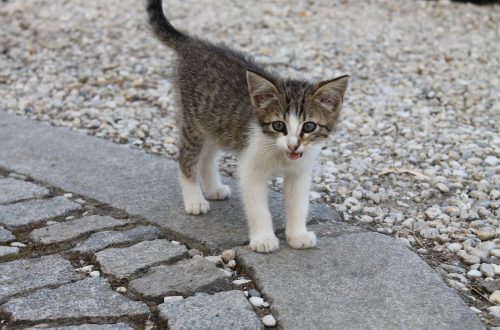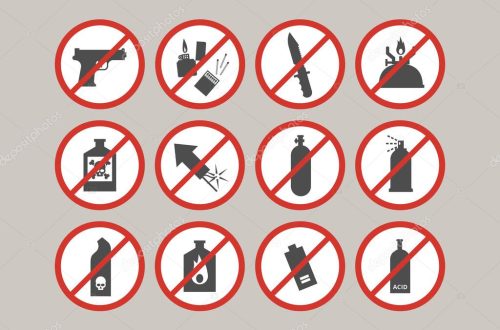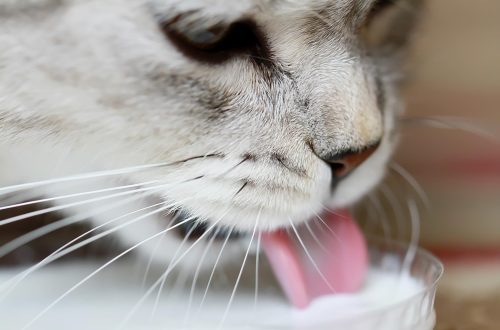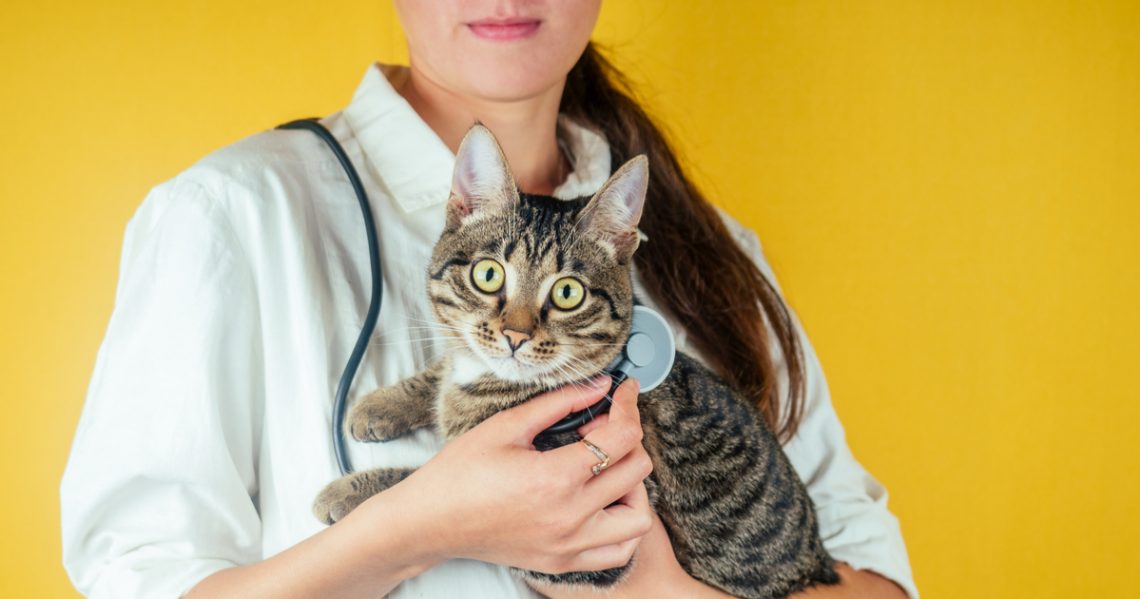
Castration of a cat – in detail about the procedure and consequences
Contents
- Castration or sterilization: is there a difference?
- Pros and cons of castration
- Indications and contraindications
- Preparing a cat for castration
- Methods of castration of a cat
- Castration of the cryptorcha cat
- What kind of anesthesia is used when castrating a cat
- Cat after castration: how to care
- Can there be complications
- When is the best time to castrate a cat?
- Where is it better to castrate a cat: at home or in a clinic
- Does a cat throw after castration
- How much does it cost to castrate a cat
- Myths about castration of cats
Castration or sterilization: is there a difference?
It is widely believed that castration and sterilization are one and the same. In fact, in the first case, during the operation, the surgeon cuts out the internal genital organs (testicles in males, ovaries in females), and in the second, he ligates the pathways along which the spermatozoa (or egg) move – the seminal duct (tubes). A sterile animal, unlike a castrated one, retains the instinct of reproduction, can mate (fertilization does not occur).
Many owners, choosing a technique, are wondering which is better and safer? Since the sterilized cat retains the production of sex hormones, he can continue the “concerts” with the spermatic cord tied. The purpose of the operation is, after all, the normalization of the behavioral factor, so castration is the most preferable option.
Pros and cons of castration
Among the advantages of castration of cats, the following points can be distinguished:
- the animal stops marking the room;
- owners get the opportunity to sleep peacefully at night;
- the likelihood of a cat escaping from the house is minimized;
- the pet becomes more calm, affectionate;
- the risk of infection of the pet with infectious and other diseases disappears.
The disadvantages of the operation include the inability to have offspring, for example, in the case when a suitable candidate has appeared, and the owners are not averse to extending the genus of the mustachioed.

Nooo! Just not my bells!
Indications and contraindications
In addition to the personal desire of the owner of a quiet life, castration also has medical indications for carrying out:
- genital trauma;
- malignant or benign tumors;
- congenital anomalies (cat – cryptorchid);
- hereditary pathologies.
However, not all animals can be castrated. Contraindications are associated, first of all, with the procedure itself, which requires the use of anesthesia and a recovery period. If the cat is weakened after an illness or due to age, he has exacerbations of any chronic diseases, heart or kidney pathologies, then castration is not recommended.
Preparing a cat for castration
Is it necessary to prepare a cat for castration? Particular attention is paid to the following points:
- the animal must be healthy (except for indications for surgery);
- all necessary vaccinations are affixed;
- conducted anthelmintic therapy.
If the owner is attentive to the health of his furry friend, vaccinations and anthelmintic prophylaxis are done in a timely manner, and the cat is in perfect health, then there are no other recommendations for preparation. If the owner doubts the health of the cat, then you need to tell the veterinarian about it. An examination before the upcoming castration may include procedures such as:
- visual inspection;
- analysis of blood, feces, urine;
- ultrasound examination of internal organs;
- electrocardiogram.
Particular attention is paid to animals that were picked up from the street. They need to be examined most carefully, since hidden infections and pathologies are possible.
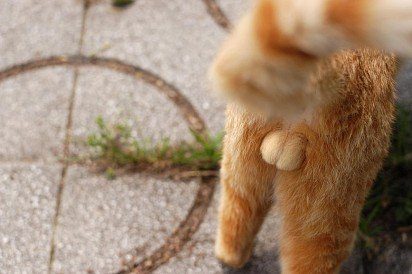
Cat named “Dazzling”
Antihelminthics are given 10 days before castration of the cat, if the last dose was more than a month ago; vaccination is given 30 days before surgery. Sometimes surgery is allowed without vaccination. However, immunity weakened by the surgical procedure is not able to resist infections – the risk of complications increases. Some clinics offer the introduction of a special serum just before castration. This significantly increases the cost of the service, but serves as an excellent prevention of the development of infectious diseases during the recovery period.
And the last point in preparing the cat for castration is the restriction in food for 10 hours before the intervention. The animal can only be given water at this time. This requirement is associated with the possibility of a gag reflex during or after the operation (reaction to anesthesia).
Methods of castration of a cat
Modern veterinary medicine offers two methods of castration of cats: surgical and chemical. Most often resort to the first option. If anesthesia is contraindicated for the animal, then it is possible to use a chemical, or drug, method.
Surgical castration
Surgical castration is carried out according to the following algorithm.
- Animal anesthesia.
- Removal of hair in the scrotum.
- Treatment of the surgical field with an antiseptic.
- Skin dissection.
- Separation of the testis from neighboring tissues and removal of it from the wound.
- Ligation of the spermatic cord – its ligation with a special suture material (prevents blood loss).
- Cutting off the testis.
- Antiseptic treatment.
Suturing is not carried out. The incision site begins to tighten on its own already in the first days after the operation, and by the beginning of the second week the wound heals completely.
Chemical castration
Chemical castration is the subcutaneous administration of a hormonal drug to a cat. The method is reversible, after the removal of the implant or the expiration of its validity, the ability to fertilize is restored. The duration of activity of the active ingredient is about 6 months, in some cases up to 1,5-2 years.
In addition to the need for periodic administration of the drug, medical castration has other features. For example, veterinarians note the presence of the opposite effect in the initial period of implant placement. The animal begins to make sounds with a vengeance, mark more often, becomes more nervous and irritable. This phenomenon is due to the mechanism of action of the drug: neuro-endocrine reactions first sharply increase, and then just as sharply slow down.
The chemical method of cat castration is not suitable if the animal is completely healthy, there is no need for procreation, and the operation itself aims to normalize the behavior of the pet. At the same time, it is necessary to stop the choice on it if the cat has contraindications for surgical intervention or mating is expected in the future.
Castration of the cryptorcha cat
One of the hereditary diseases of cats is cryptorchidism. In an animal cryptorchid during fetal development, the testicle (one or both) does not descend into the scrotum. Their location in the inguinal region is an indication for castration, as it poses a threat to the health of the pet (for example, the formation of malignant tumors).
Castration with diagnosed cryptorchidism will cost the owner of the cat more than a regular operation. If the veterinarian cannot locate the abnormal testicle by palpation, an ultrasound may be ordered. In any case, both appendages should be removed during castration, since the remaining one will produce hormones, and the behavior of the animal will not change.
Why did I write in the shoes of the hostess …
What kind of anesthesia is used when castrating a cat
The operation to remove the testicles is short (castration time is about 5 minutes) and simple, but requires the use of painkillers. To do this, use different methods:
- inhalation anesthesia – the introduction of gas into the lungs of an animal using a tube or mask, is rarely used due to the high cost;
- injection anesthesia – the most common, represented by the introduction of painkillers and sedatives into the muscle or vein of the cat (dangerous for animals with heart pathologies);
- local anesthesia – injections under the skin or into the spinal cord, are rarely used.
Most often, a combined method of anesthesia is used for castration. For example, before placing a tube in the mouth of an animal, it is necessary to limit its motor activity – to give an injection with a sedative.
Cat after castration: how to care
What to do after castrating a cat? First of all, you need to provide the animal with peace for a while while he is under the influence of anesthesia. How much anesthesia goes away depends on the chosen method of anesthesia and the individual characteristics of the pet; its deep phase can last from a quarter of an hour to two, and a full exit is possible after 6-8 hours. If the cat is at home, the owner requires the following actions.
- Provide your pet with a spacious, level space. When the cat begins to regain consciousness, he may fall, hit, bury his face in something, blocking the air supply. The ideal choice is the floor.
- Under the pet you need to put an absorbent napkin in case of uncontrolled urination.
- Lighting should be dimmed to avoid irritating the effect of light on the eyes.
- At low ambient temperatures, the cat needs to be provided with heat (a heating pad, a battery, a blanket).
- It is imperative to monitor the condition of the wound: slight wetting is the norm, but if the bleeding does not stop, you need to seek help from a veterinarian.
- Since blinking does not occur under anesthesia, in order to prevent inflammation in the cat’s eyes due to drying out, it will be necessary to instill saline or any eye drops that do not contain antibacterial components. You can use water for injection or a solution intended for lenses.
When the pet begins to come out of anesthesia, he may behave inappropriately: hiss, meow, stagger, bump into objects, urinate under himself. It is necessary to provide him with peace, to protect him from excessive attention and curiosity of domestic (people and animals).
You can feed the cat on the second day after castration, and give water no earlier than 4 hours later. Further care is to prevent infection of the wound. To prevent the pet from licking it, he needs to wear a special collar. You can prevent the ingress of small particles of cat litter if you replace it with a napkin for a while.
Can there be complications
Complications after castration are observed in rare cases. Among them:
- active bleeding;
- damage to the wound by the pet itself (the cat tries to lick it after castration);
- infection, pus formation, inflammation;
- fistula;
- sand in the bladder, urethra.
If any deviations in wound healing are found, you should contact the clinic.
When is the best time to castrate a cat?

Master, I don’t understand…
What is the best age to castrate a cat? Experts recommend to carry out the operation in the period of 7-9 months. It is believed that up to 7 months the body of the animal is not yet sufficiently developed to tolerate the intervention well. After 9 months, most mustachioed pets are already entering puberty, which is manifested by appropriate behavior. There is a possibility that even after castration, this stereotype may persist.
Castration of an adult cat requires more responsibility and care on the part of the owner and the veterinarian. The older the animal, the higher the risk of complications. An aged pet may have a history of chronic diseases, intolerance to any drugs, a decrease in the activity of the immune system, so adult cats are operated on only after a thorough examination or do without castration, by medication.
Where is it better to castrate a cat: at home or in a clinic
Castration of a cat can be carried out both in the clinic and at home. The algorithm of the doctor’s actions and the requirements for the conditions remain the same. Both options have advantages and disadvantages.
Place of castration
Pros
Cons
At home
- no stress from an unfamiliar room
- no need for transportation
- minimal risk of catching an infection
- material savings
- the owner must be nearby (you will need to take days off)
- inability to provide emergency care if the animal becomes ill
In the clinic
- you can leave the cat under the supervision of doctors until complete recovery
- complete medical care for your pet
- emergency care for complications
- stress for the cat
- there is a possibility of contracting an infectious disease
- higher price of the service
Does a cat throw after castration
The most common question of owners: do cats mark after castration? If the operation was performed before the onset of puberty of the pet, then leaving marks, provoked by the hormonal background, is not yet fixed at the subconscious level. In this case, the cat will not mark the room.
When the testicles are removed after the neuroendocrine system of regulation of the sexual instinct has been established, residual effects in the form of marks are possible. This is due to the continued production of testosterone. As its level in the blood of the animal decreases, both the sexual desire and the corresponding behavior of the cat will decrease. Gradually this phenomenon will come to naught.
How much does it cost to castrate a cat
How much it costs to castrate a cat depends on a number of factors:
- clinic level;
- castration method;
- the complexity of the operation (simple removal of the testicles, removal of the tumor, etc.);
- type of anesthesia;
- care after the intervention (finding a pet in the clinic, complications that have arisen, and so on);
- therapy before and after surgery (introduction of immune sera, the need for antibacterial agents, immune, tonic drugs).
On average, the price of castration is in the range of 900-1500 rubles. In some clinics, the cost of the service reaches 7000-8000 rubles or more.
Myths about castration of cats
There are several common misconceptions about cat neutering that are actually myths.
The cat will get fat.
Due to changes in the hormonal background in the animal, the rate of metabolic processes and physical activity decrease. Obesity can be prevented by changing your pet’s diet.
The cat will not catch mice.
Together with the testicles, only the sexual instinct disappears, the rest, including the hunting instinct, remain.
The cat will be indifferent to games.
The animal becomes calmer, but, on the contrary, it plays more than before.
The pet will have bladder stones.
The appearance of sand and stones in the bladder and urethra is not directly related to castration, but depends on malnutrition. Removal of the testicles only leads to a narrowing of the lumen of the urethra, so the likelihood of developing urolithiasis increases. You need to rethink your diet.
The cat is “bad” from the fact that he was deprived of the possibility of reproduction.
As a result of hormonal adjustment, the sexual instinct will disappear, so the animal will not “think” and “suffer” about it.
Castration of a cat has become a common procedure, which not only allows the owners to maintain peace and cleanliness in the house, but also serves as a prevention of the spread of infections. In addition, thanks to this operation, the number of homeless animals may decrease. The main thing is to approach the issue responsibly and provide the pet with optimal conditions for a quick recovery.



